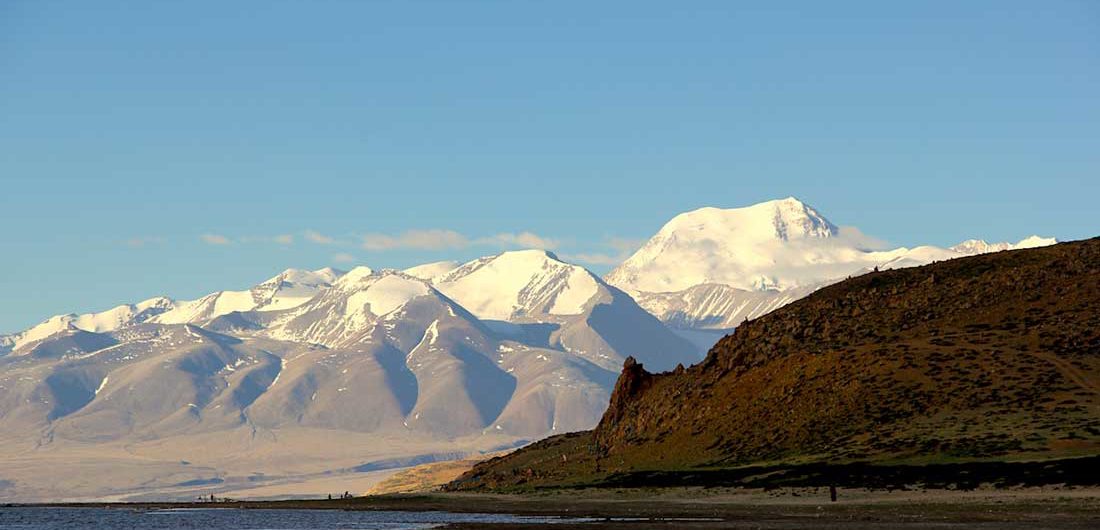Travel in Tibetan Areas
If you are planning a trip to Tibet and travel in Tibetan areas, you might be looking for general information about “how to travel”. In this blog post, the Adventures in Tibet is a Tibetan owned travel agency, will try to give you a brief overview of how, who, where, what, why, and when. We will also try to give you a few helpful hints about the culture that will make your Tibet travel experience smoother. (For more detailed information on specific topics like medicine, language, and history check out our other blog posts.)
Though Tibetan people and culture extend as far as the Baltistan region of Pakistan, for most travelers, the Tibet Autonomous Region of the People’s Republic of China represents the true center of Tibetan culture.

The People’s Republic of China is made up of 55 recognized ethnic minorities, 22 provinces, two special administrative regions, four municipalities, and five autonomous regions. Each province is further divided into any number of prefectures. Each prefecture is, in turn, made up of counties, which are themselves composed of smaller districts and village distinctions. Upon a closer look at a more detailed map of China, one can see that in addition to the Tibet Autonomous Region (TAR), Qinghai, Sichuan, Gansu, and Yunnan province contain 10 Tibetan autonomous prefectures or joint autonomous prefectures shared with another minority group. These are: Haixi, Haibei, Hainan, Huangnan, Yushu, and Golok in Qinghai, followed by Garze and Ngawa in Sichuan, Gannan in Gansu, and Deqen in Yunnan. Confused yet? Don’t be! We hope this information demonstrates to our prospective travelers that the options for travel in Tibetan areas are numerous and diverse.
Do’s, Don’ts, and Helpful Hints – Travel in Tibetan Areas
Though each region, valley, or village, may have its own unique customs and sets of social rules, there are still a general set of cultural rules to be aware of when traveling on the plateau. Keeping these advices in mind can not only help you to be a respectful visitor, but may even ingratiate you to your hosts, enriching your travel experience and your ability to interact with the local culture!
Never step over any part of another human’s body. Never step over food.
While traveling in Tibetan areas, you may sometimes find yourself seated on the ground surrounded by people. Festivals, religious teachings, or lunch in a nomad tent are all examples of such situations. It is taboo to step over other people, even their feet. If you would like to stand up and leave at any time, simply stand and signal to the people around you that you need an exit route. People will readjust to allow you passage by moving their hands, feet, etc. out of the way. It is also advisable to avoid stepping over food. If you are having lunch on the ground, always walk around the food instead of over.
Give and receive food with two hands.
Any time that you are giving or receiving food or drink, do so with both hands as a measure of politeness.
Do not pat people on the head or hit them on the chest.
In some cultures, patting another person on the head or tapping them on the chest is used a sign of friendship. In Tibetan culture it is a sign of disrespect. Small children are an exception to this rule, but refrain from these actions otherwise.
Hand Signs
Tibetans frequently use hand signs to express opinions about the quality of objects or places, or people. Tibetans will often show a thumbs up to indicate that something is of good quality, a middle finger pointed sideways to indicate that something is of average quality, and a pinky finger pointed sideways to show that something is bad and low quality.
Stoves
The hearth or stove of any Tibetan home is generally considered the heart. Whether in a tent or a farmhouse, there are different rules of respect relating to the hearth. Avoid putting socks or shoes on a stove, and be sure to ask your host or observe their behavior before passing anything over the hearth, or throwing anything into the fire.
Pictures
As with most Tibet travel destinations, when taking pictures, please show courteousness and ask before photographing people. Please also ask before photographing inside of monasteries, certain paintings or statues may be harmed by camera flashes. Alternatively, some statues and paintings are not permitted to be photographed.
Religious Monuments, Monasteries, and Holy Sites
You will see prayer flags in most Tibetan areas. Never step over these flags, even if they have fallen on the ground. Always lift flags up to talk under them. Never stand on flags and never stand on writing. Many rocks around rivers and religious sites are engraved with prayers. Do not stand on such things. Next, one should always remove headwear when entering a monastery. Finally, always remember to circle clockwise at Buddhist sites and counterclockwise at Bon sites (the pre-Buddhist indigenous religion of Tibet).
Travel in Tibetan: The Question of the Weather
The weather is unpredictable on most of the plateau, but contrary to popular opinion, the summer is not necessarily the best time to trek. Though the summer is certainly beautiful, the rainy season, which lasts from June until August, may through a wrench in your Tibet trekking plans! The early fall is a good time to plan treks because the heavy rains have abated and the winter cold has not yet arrived! The winters are extremely cold in most places, but snowfall is not guaranteed as the winters are quite dry. Please contact us for place specific information on weather conditions, but remember, it is difficult to plan around the weather!
What to Bring
In terms of clothing, layers, warm clothes, and good walking shoes will be a Tibet traveler’s best friend. Flashlights and headlamps are also indispensable as many rural areas either do not have power or experience frequent electrical problems. General toiletries can be found in shops, but if you can’t live without your favorites, bring them! Your “to bring” list will likely depend on what areas you are planning to visit. Check with our Adventures in Tibet travel team for more information and region specific advice.
Road Conditions
There are many construction initiatives to pave or rebuild roads and passes in Tibetan areas. While the general condition of roads in China is quite good, be aware that construction is often unannounced, and could result in a couple hours waiting at a road block. It is worth noting that during the summer, landslides may also be a problem. Our Adventures in Tibet team can help you to determine when and where these construction projects are taking place to help you avoid inconvenience.
Closures
The Tibetan Autonomous Region and the Tibetan areas of Yunnan, Gansu, Qinghai, and Sichuan, are occasionally closed or subject to travel limitation and bans. Sometimes these restrictions are not announced. Make sure you look for information on the area you are traveling to, and feel free to contact the Adventures in Tibet team with any questions.
Thank you for reading this bog post on Adventures In Tibet. We will post more informative articles in the future, regarding Tibet travel, Tibetan culture and extra to create your Tibet tour meaningful.
Essential Links That May Help You:
Reservation Policy
Chinese Visa Application
Tips for a Budget Tibet Tour
Plan a Successful Tibet Tour
Tibet travel permit
About Us
Our Travel Team
Local Community Project![]()
Why Choose a Local Travel Agency
Our Privacy Policy
Tibet Group Visa
How to Visit Tibet
Trekking Adventures
Our Office Direction


Comments